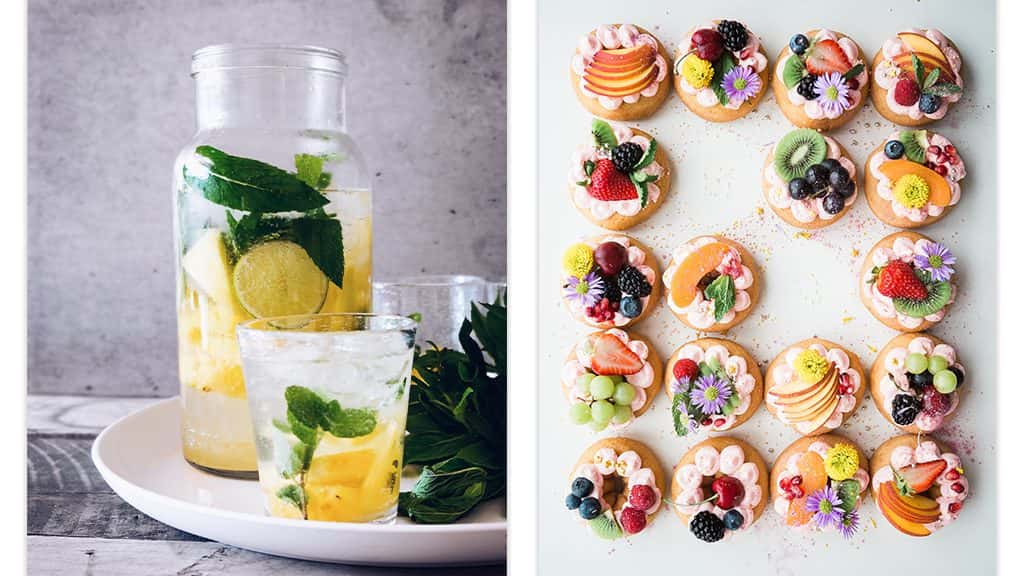In order to create the most effective immersive experience for your customers or clients, you will want to engage as many of their senses as possible. Here are 10 ideas to get you started:
1. Touch – incorporate interesting textures
When planning your brick and mortar space, be mindful of the textures you are including.
Do you have places to sit? Add a variety of throw pillows in different fabrics – plush, linen, burlap, lace.
You can also add texture to hard surfaces like walls, pillars, countertops and shelves using your imagination with a side of drywall mud, art supplies or shelf paper.
2. Touch – invite touching
Maybe your physical space isn’t conducive to a texture takeover. Don’t write this important sense off just yet!
You can use radio ads, online marketing or on-site signs to invite your customers to touch relevant objects. If you sell skincare products, picture this: “Rub your hands together. Is your skin silky smooth? Trade in those dry palms for soft, touchable hands with Your Brand!”
3. Taste – offer samples
If you sell food or drink, this is a no-brainer. Offer samples of your product and make it easy for folks to find what they just tasted and purchase it.
Good food sells itself.

4. Taste – offer refreshments
Even if you don’t sell food, you can offer guests and customers something to taste as a part of their overall experience.
My favorite spa keeps flavored water on hand for before and after your massage – keeping you hydrated and engaging your sense of taste.
What refreshments could you add to your customer experience?
5. Smell – make it a signature
When people walk into your business, it should smell like your business. What does your business smell like? Well, that’s up to you.
The sky is the limit: your antique shop can smell like cloves and cedar, or like warm linen (whatever that is). Use plug-in scent distributors, essential oils, potpourri, etc. to achieve your “signature” scent.
6. Smell – use it as a tag
Alternatively, you can use different scents in different areas of your store to draw lines: differentiate different genres of books, or create a scented path to subtly guide customers through your space.
7. Hearing – set the mood with music
You can do a lot for the mood of your business space with the music you select. Whether you choose to tune in to a local radio station or create your own playlist, music sets the tone in a room.
Do you want your customers to feel relaxed? Excited? Comfortable? Uneasy? Say it with song!
8. Hearing – follow them home
The cool thing about audio is that you aren’t limited to your physical space. Using traditional radio and online tools, you can create ads, stories and more that keep talking to clients after they leave the building – or long before they get there.
Remember that these are an extension of the overall experience, so keep them in tune with the rest of your marketing efforts.
9. Sight – colors!
Like music, color can set the tone of a space.
Use the colors of your logo in your physical location – walls, curtains and décor – to create a sense of continuity.
Take a look at color theory and use the concepts to calm, energize, or otherwise motivate your visitors.

10. Sight – motion!
A lot of marketing, and a lot of the customer experience, is visual. In fact, it can be hard for your ads and announcements to get tuned out amid the rush of things your customers see each day.
One way to stand out is by using motion: GIF ads, videos and teenagers in pizza costumes are all attention-grabbing options. But don’t just throw them out there willy-nilly; again, make sure your visual elements fall in line with your broader marketing themes and goals.
What about you? Tell us about how you engage your clients’ senses, or about a business you know that rules in this area.
